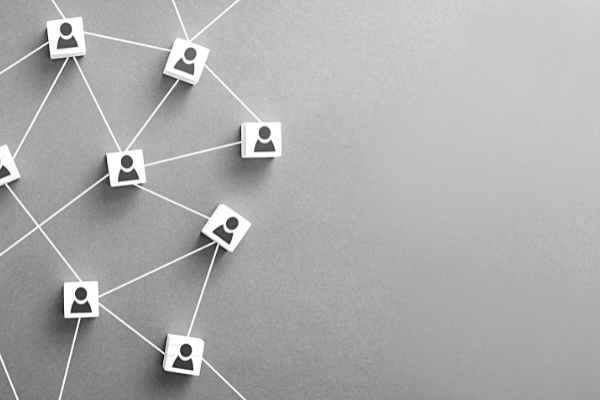"We’re in challenging times but also the biggest opportunity of our lifetime.” -Patti Mara
Remember when big box stores started falling victim to massive online vendors like Amazon? Now both categories - traditional retailers and online giants - are being outwitted by small-but-mighty startups.
Nowhere is this more apparent than in the financial world, where neobanks and fintech firms are revolutionizing how people manage their finances. What does it all mean for customer loyalty?
Patti Mara, global strategic consultant with Maranet Inc. and author of UpSolutions: Turning Teams into Heroes and Customers into Raving Fans, joined James Robert on the Banking on Digital Growth Podcast to answer that very question.
The Cornerstones of Communities: Local Businesses
Patti Mara didn’t intend to write a book about the pandemic, but her book was published in January 2020 just as the COVID-19 crisis was heating up. Since then, her book has found a natural connection to a new world in which local businesses are struggling to meet the needs of a fast-changing digital marketplace.
Local businesses have always been the cornerstones of our communities, introducing people to new products and bringing diversity to our lives. Unfortunately, they’ve often been displaced by dominant retailers like Walmart, Amazon.com, and other national brands.
It’s more difficult than ever to be a brick-and-mortar business based in a local community. People want next-day delivery of precise items. They don’t want to drive around and browse for the things they need.
Yet Patti sees a new renaissance emerging among locally-focused businesses. People are tired of the boring homogeneity of big brands and are starting to remember why smaller, more community-focused brands are so appealing.
Financial Health and Wellbeing in Buyer Behavior
James Robert likens modern financial services to the healthcare field because they’re both so intimately connected to mental wellness. Numerous research studies have found that when someone is financially insecure, it has a profound impact on their emotional wellbeing.
Community financial brands impact health because they encourage everyone who lives there to make smart financial decisions. This is one of the reasons why the U.S. PPP lending program stepped in to provide financial support during the COVID-19 pandemic.
However, many business owners still forget that community service is what they’re selling. Their value is in what they create for the marketplace. As Patti puts it, “They’re playing the wrong game of business.”
To get to the core of your company’s mission, ask how you’re creating value.
- Why are people buying your products?
- Why do they prefer your services?
- Which niche are you filling that nobody else fills?
Answering these kinds of questions reminds a business to avoid becoming commoditized.
The magic of a business is helping people make better decisions, find better outcomes, and live better lives. At the most basic level, this is a type of problem-solving.
Patti points out that selling is just problem-solving in a business structure. When a business turns its entire team into problem solvers, they create instant value for customers. People are grateful to have someone else helping them problem-solve their biggest challenges.
This is the foundation of customer loyalty. It’s why James Robert advises financial brands to “help first, sell second.” Taking a helping-first mindset breaks down the barriers between people and prevents them from feeling uncomfortable in a seller-buyer situation.
How Team Members Become Heroes
The tagline of Patti’s book is about turning teams into heroes and customers into raving fans. A company’s employees are heroes because they’re the brand ambassadors who celebrate the best aspects of the brand, day after day.
Imagine walking into two different stores. In the first store, you ask an employee where to find something and they reply, “Aisle four.” You wander into the store trying to find your item. Maybe you find it and make a purchase or maybe not.
In the second store, you ask the same question and the employee replies, “It’s in aisle four. Let’s go find it!” Along the way, the employee asks about your needs and mentions a few other products that might be helpful. You end up with the item you originally wanted, plus another item that makes your life easier and more fun.
See the difference? It’s so simple, but it shows why the employee is the hero of this adventure.
In today’s marketplace, it’s difficult to get an employee to pay attention whether you’re shopping in person or online. When you need help, it’s a common experience to feel that you’re yelling into a void, just hoping someone hears.
“Hello? Is anybody there?”
Walmart offers items for $4 because they save money on employees and use an ultra-efficient supply chain. To compete, a smaller business can invest in employees, offer superior products, connect with buyer needs, and provide a better buying experience from the customer’s perspective.
Upselling vs. Upsolutions
Patti emphasizes the need to distinguish between upselling and upsolutions in your team’s interactions with customers. The difference between them makes all the difference in the world.
Upselling is asking, “Would you like fries with that?”
It’s a seller-focused question based on the seller getting the most possible money out of the buyer.
By contrast, upsolutions ask, “How can I give you more of what you need?”
Maybe the customer doesn’t want fries. They want a milkshake. They’re also interested in other dessert items. If the employee had asked the right question, it would have benefited both the buyer and the seller.
Upsolutions consider the seller-buyer relationship transformational rather than just transactional. They keep the customer at the heart of every interaction, anticipating their needs and expressly asking what they desire.
In the financial world, this translates to empowering your customers to explore products and services they might not even know they need. Rather than pushing your current promotions, you essentially ask, “How can I help you be more financially successful?”
Guesswork vs. Feedback
Too many brands are using guesswork to determine what their customers want. Instead of gathering data, conducting surveys, or simply asking what their customers prefer, they’re making all kinds of assumptions.
This puts their salespeople and other team members at an automatic disadvantage in their jobs. They don’t understand what the business offers customers, thus they fall back on the same old crutch of pushy selling with the latest promotions.
Flip this script by creating a built-in structure for gathering feedback from customers and sharing it with your employees. Gather customer feedback and hold a 20 or 30-minute employee huddle once a week to discuss it. Keep the discussion open and honest about what your customers are saying.
At traditional financial institutions, the most forward-facing employees are bank tellers. These key team members need actionable information to provide the best possible customer interactions. Maybe you’ve learned that customers want extra help at tax time. Instead of just saying, “How are you today?” a teller can say, “Tax season is coming up. Do you need to talk to someone about that?”
For financial brands in general, this involves being problem solvers and critical thinkers who look through the data and find ways to make proactive recommendations. Maybe an online customer is feeling sad about their finances and needs financial counseling. Direct them to it and help them feel empowered to take control of their situation.
The Year of Small Giants
Many people know Patti from a recent article she wrote about the “year of small giants.” It builds on Bo Burlingham’s book “Small Giants,” which is about companies that want to be excellent but not necessarily big.
This concept provides a ray of hope for small companies that sometimes look around and feel intimidated by the biggest players in the industry. Little startups and community businesses are making a big comeback, thriving with the support of customers who care about what they do.
What do small giants have in common? According to Patti, they tend to share characteristics like:
- Focusing on the customer journey
- Offering experiences that are hard to find elsewhere
- Being value-oriented rather than price-oriented
- Problem-solving their way through business challenges
- Staying connected to the community
- Loving what they do and the people they work with
These businesses also recognize that the concept of “community” is borderless and isn’t defined by geography. A community includes everyone who connects with the brand, regardless of where they live or how they access information.
For example, Aspiration Financial is built around the idea of environmentalism, where people can save the planet through financial decision-making. This is the opposite of a commoditized experience and feels both community-focused and intensely individualized.
This is why the world’s small giants are so successful and perhaps even a bit dangerous. They free themselves from the idea of being big and focus on being smart, which attracts plenty of eager buyers who enjoy thinking the same way.
To learn more about the small giants of the financial world, you can connect with Patti at pattimara.com. Her website includes a short training video and helpful assessment tool for small and growing businesses.
This article was originally published on April 14, 2022. All content © 2024 by Digital Growth Institute and may not be reproduced by any means without permission.





